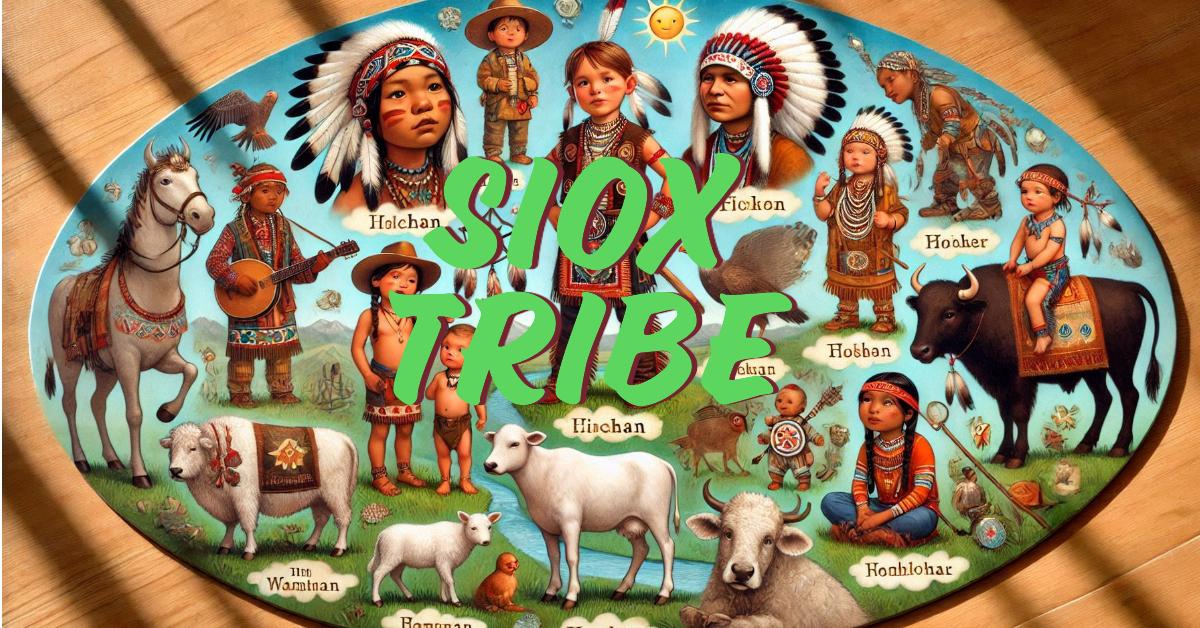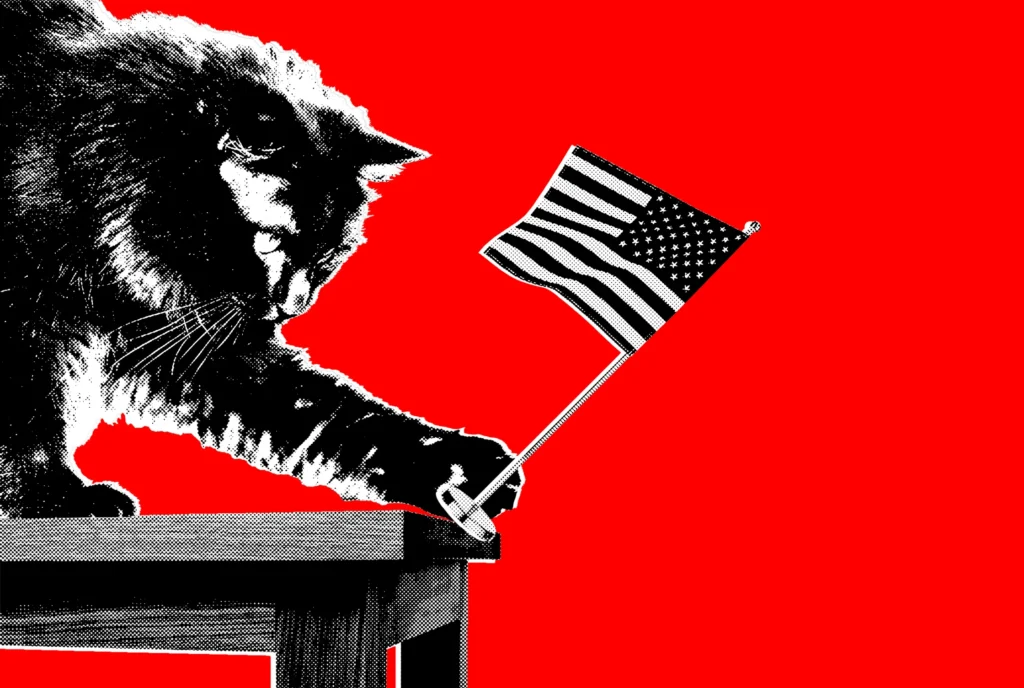In the Sioux tribe, children were highly valued as the future of the tribe. Their upbringing was essential for the tribe’s survival, as they were taught vital skills, cultural values, and responsibilities that would help them contribute meaningfully as adults. Sioux people believed that strong, well-raised children were key to maintaining the strength and unity of the community.
Early Life and Play as Education
For Sioux children, early life was filled with learning through play. Play wasn’t just for fun; it was an essential method of education, helping children gain important life skills.
- Girls’ Play: Girls played with dolls made of cloth or wood and small models of tepees. This helped them learn about taking care of a home, preparing food, and caring for others—skills they would use as wives and mothers.
- Boys’ Play: Boys played with miniature bows and arrows or small spears. These toys helped them practice hunting and combat skills, preparing them for their future roles as hunters and warriors.
The Role of Extended Family in Raising Children
In Sioux culture, raising children was a communal effort. Extended family members such as grandparents, uncles, and aunts all played an active role in teaching children important life lessons. This allowed children to learn from a variety of adults and helped strengthen family bonds.
This communal approach provided children with a well-rounded education and made sure they understood their place in the tribe. The guidance of multiple relatives ensured that children grew up with a strong sense of responsibility, respect, and connection to their heritage.
Gender-Specific Roles and Responsibilities
As children grew older, their roles in the tribe became more defined, based on their gender. Boys and girls learned different skills, preparing them for the traditional roles they would take on in the tribe.
- Girls’ Roles: From a young age, girls were trained in domestic tasks like planting, harvesting, cooking, and making clothing. These skills were essential for maintaining the home and family. As girls matured, they learned that their primary role would be to become wives and mothers, helping sustain the tribe by raising the next generation.
- Boys’ Roles: Boys were trained in skills that would prepare them to become hunters and warriors. They learned how to ride horses, use weapons, and track animals. These skills helped provide food for the tribe and also ensured the tribe’s safety. By the time they were 15, many boys were ready to join the warriors and protect the tribe.
The Importance of Storytelling
Storytelling was an essential part of Sioux childhood. Elders passed down stories about the tribe’s history, legends, and moral lessons. These stories helped children learn about their ancestors, their cultural values, and the importance of respect for nature, their elders, and the Creator.
Storytelling connected children to their heritage and helped them understand the roles they were expected to play in the tribe. The stories also fostered a deep pride in their cultural identity and reinforced the values that were central to Sioux life.
Participation in Ceremonies and Rituals
Sioux children were also involved in important ceremonies and rituals. These events helped children connect with the tribe’s spiritual beliefs and understand their role in the community. Ceremonies like sweat lodge rituals, vision quests, and puberty rites were important for spiritual growth and taught children respect for the natural world.
By participating in these ceremonies, children learned the tribe’s spiritual teachings and gained a deeper understanding of their connection to their ancestors and the Creator. These experiences also reinforced the values of respect, unity, and harmony that were important to Sioux society.
ALSO READ: The American Forensic Toxicology Richard Stripp Lawsuit: What You Need to Know
The Role of Play in Skill Development
For Sioux children, play was not only fun but also a way to develop important skills.
- Boys: Boys’ games focused on activities like hunting, tracking, and horseback riding. These games helped them build physical strength and improve their hunting and fighting abilities, which would be necessary in their adult lives.
- Girls: Girls’ games focused on domestic tasks, such as caring for dolls or managing a household. These activities helped them prepare for the roles they would take on as adults, teaching them how to manage a home, care for children, and maintain family life.
Discipline and Respect in Sioux Culture
In Sioux culture, discipline was focused on teaching respect, responsibility, and the importance of community. Children were not typically punished harshly. Instead, they learned the consequences of their actions through gentle guidance. If a child misbehaved, they might lose a toy or be given a mild reprimand to help them understand what was expected of them.
This approach to discipline emphasized the value of respect for others and encouraged children to understand their place within the tribe. It helped foster a sense of community and responsibility, which were essential values in Sioux society.
The Role of Spirituality in Child Development
Spirituality played a central role in Sioux life, and children were taught about their spiritual beliefs from an early age. They learned to respect the natural world, the elders, and the spiritual forces that shaped the world around them. Spiritual teachings were passed down through ceremonies, stories, and daily practices, helping children develop a deep sense of connection to their community and the world.
These spiritual teachings provided children with a strong moral foundation, guiding them through their childhood and into adulthood. Sioux spirituality emphasized the importance of harmony, respect, and balance, values that helped children grow into responsible, compassionate members of the tribe.
The Impact of European Colonization on Sioux Childhood
The arrival of European settlers and the forced colonization of Native American tribes had a profound effect on Sioux children. Many Sioux children were sent to boarding schools, where they were forced to abandon their Native American languages, customs, and beliefs in favor of Western education. These schools attempted to erase Native American cultures, and the effects of this cultural disruption were felt for generations.
The loss of cultural identity during this period caused immense hardship for many Sioux children. However, in later years, there has been a resurgence of efforts to reclaim and revitalize Native American culture, with a focus on preserving the traditional teachings that were once threatened by colonization.
Conclusion: The Legacy of Sioux Child Rearing
Sioux children were seen as the future of the tribe, and their upbringing was designed to ensure the tribe’s survival and success. Through play, discipline, storytelling, and participation in ceremonies, Sioux children learned the skills and values they needed to contribute to the tribe. Even in the face of challenges like European colonization, the Sioux people’s commitment to preserving their cultural identity and traditions helped ensure that their customs would continue to thrive for generations.
By understanding the roles of children in Sioux society, we gain insight into how deeply the tribe valued family, community, and respect for their heritage. This respect for children and the emphasis on education, spirituality, and responsibility were central to maintaining a strong, unified tribe.
ALSO READ: Who Advertised Optivita? A Detailed Look at Kellogg’s Marketing Strategies












